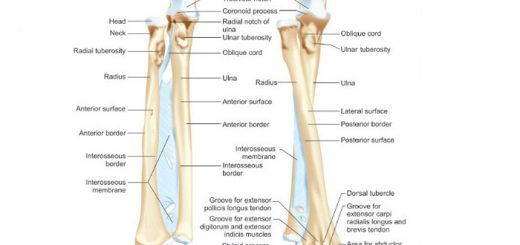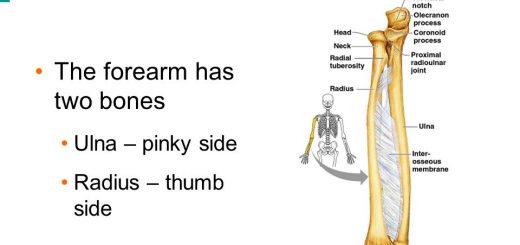Diaphragm anatomy, structure, function, Phrenic nerves and Nerves of the thorax
The diaphragm separates the thoracic cavity, containing the heart & lungs, from the abdominal cavity, It is the primary muscle used in respiration, It has some nonrespiratory functions as well, The diaphragm increases the abdominal pressure to help the body get rid of vomit, urine, and feces, It places pressure on the esophagus to prevent acid reflux.
Thoracic diaphragm
The diaphragm is a sheet of internal skeletal muscle in humans and other mammals that extends across the bottom of the thoracic cavity, it performs an important function in respiration, It contracts & flattens when you inhale, This creates a vacuum effect that pulls air into the lungs, When you exhale, the diaphragm relaxes and the air is pushed out of the lungs.
Origin of diaphragm:
- Sternal origin: Back of the xiphoid process of the sternum.
- Costal origin: Inner aspect of lower 6 ribs.
- Vertebral origin: (two crura and five arcuate ligaments).
Two crura:
Right crus arises from the ventral aspect of the upper three lumbar vertebrae, and the left crus arises from the upper two lumbar vertebrae.
Arcuate ligaments:
- The median arcuate ligament: The median tendinous arch connecting the right & left crura.
- Medial arcuate ligament: On each side, connecting each crus with the tip of the transverse process of L1.
- Lateral arcuate ligament: On each side, connecting the tip of the transverse process of L1 with the last rib.
Insertion of diaphragm
Into the central tendon of the diaphragm which is formed of three lobes: right lobe, left lobe, and the median lobe. The central tendon is depressed and the lateral parts are elevated forming the right & left copula.
Major openings in the diaphragm:
1- IVC opening:
- Site: In the central tendon of the diaphragm between the right lobe and the median lobe.
- Level: T8.
- Structures passing through:
- IVC.
- Right phrenic nerve.
- Lymphatics.
2- Aortic opening:
- Site: Posterior to median arcuate ligament.
- Level: T12
- Structures passing through:
- Aorta.
- Azygos vein.
- Thoracic duct.
3- Oesophageal opening:
- Site: Right crus.
- Level: T10
- Structures passing through:
- Oesophagus.
- Vagi.
- The anastomotic branches between left gastric & aortic oesophageal arteries.
Other structures passing through the diaphragm
- Splanchnic nerves which pierce the crura.
- Inferior hemiazygos vein which pierce the left crus.
- Psoas major muscle.
- Sympathetic trunk, 3,4 pass deep to the medial arcuate ligament.
- Quadratus lumborum.
- Subcostal N, Vs. 5,6 Pass deep to the lateral arcuate ligament.
- Lower five intercostal Ns, Vs between the slips of the costal origin of the diaphragm.
- Superior epigastric vessels between sternal and costal origin.
- Musculo phrenic vessels between the 7th and 8th costal slips.
Phrenic nerves
Origin: Ventral rami of C4 mainly and C3, 5.
Right Phrenic Nerve
It descends on the right side of:
- Right innominate.
- Superior vena cava.
- Right atrium (separated from it by the pericardium).
- Inferior vena cava.
As it descends it lies in front of the root of the right lung where it is related laterally to the right lung and pleura, Then, it passes through the IVC opening of the diaphragm to be distributed on the inferior surface of the diaphragm.
Left Phrenic Nerve
The left phrenic nerve descends between the left common carotid and left subclavian arteries. Then, it crosses the left surface of the arch of the aorta and crosses also the, left vagus. It descends on the left side of the left ventricle (separated from it by the pericardium).
As it descends it lies in front of the root of the left lung where it is related laterally to the left lung and pleura, Then, it pierces the left copula of the diaphragm to be distributed on the inferior surface of the diaphragm.
Distribution:
It is a mixed nerve that gives:
- Motor fibers to the diaphragm: Each nerve supplies the corresponding half of the diaphragm.
- Sensory fibers to the pericardium, thymus, mediastinal pleura, and coeliac plexus.
Nerves of the thorax
1) Vagi Nerves
The vagus nerve is the tenth cranial nerve.
Course:
- Right Vagus Nerve enters the thorax by passing in front of the 1st part of the subclavian artery. Then, it passes on the right side of the trachea. It descends behind the right main bronchus where it breaks to form the right posterior pulmonary plexus.
- From the pulmonary plexus, it is reformed again and breaks once more on the oesophageal wall to form the oesophageal plexus. From the esophageal plexus, it is reformed again to form the posterior gastric nerve which enters the abdomen by passing through the oesophageal opening of the diaphragm.
- Left vagus nerve descends between the left common carotid and left subclavian arteries. Then, it crosses the arch of the aorta where it is crossed in the same time by the left phrenic nerve. It descends behind the left main bronchus where it breaks to form the left posterior pulmonary plexus.
- From the pulmonary plexus, it is reformed again and breaks once more on the oesophageal wall to form the oesophageal plexus. From the oesophageal plexus, it is reformed again to form the anterior gastric nerve which enters the abdomen by passing through the oesophageal opening of the diaphragm.
Branches:
- Left recurrent laryngeal nerve recurs below the arch of the aorta to ascend in the groove between the left side of the oesophagus and trachea.
- Filaments to four plexuses arise from both sides to the following plexuses:
- Cardiac plexus.
- Anterior pulmonary plexus
- Posterior pulmonary plexus.
- Oesophageal plexus.
2) Sympathetic Trunk
Structure: It is formed of twelve ganglia on each side. The first joins the inferior cervical sympathetic ganglion to form the stellate ganglion).
Course: It enters the thorax by crossing the neck of the first rib. It descends over the heads of the upper ribs, then over the sides of the bodies of the vertebrae crossing the posterior intercostal nerves and vessels. It leaves the thorax to enter the abdomen by passing deep to the medial arcuate ligament of the diaphragm.
Branches:
- Communicating branches to the corresponding spinal nerves.
- Oesophageal branches (1st – 4th ganglia).
- Pulmonary branches (1st – 4th ganglia).
- Cardiac branches (1st – 4th ganglia).
- Splanchnic branches:
- Greater splanchnic nerve (5th – 9th ganglia).
- Lesser splanchnic nerve (10th – 11th ganglia).
- Lowest splanchnic nerve (12th ganglia).
3) Plexuses of the thorax
Cardiac Plexuses. They are autonomic plexuses that supply the heart.
a- Superficial Cardiac Plexus:
- Site: On the right side of the ligamentum arteriosum, below the arch of the aorta.
- Formation: Cardiac branch of the left superior cervical sympathetic ganglia, and Cardiac branches of the left vagus.
b- Deep Cardiac Plexus:
The site is in front of the bifurcation of the trachea.
Formation:
- Cardiac branches of all cervical sympathetic ganglia (except left superior cervical sympathetic ganglion).
- The cardiac branches of the upper (1- 4) thoracic sympathetic ganglia.
- Cardiac branches of the left vagus.
- Cardiac branches of the left recurrent laryngeal nerve.
c- Coronary Plexus:
Site: They surround the coronary arteries and their branches.
d- Pulmonary Plexus:
There are anterior & posterior pulmonary plexuses in the hilum of each lung (in relation to the main bronchi).
e- Oesophageal Plexes:
Site: Oesophageal Plexes lie around the wall of the oesophagus in the posterior mediastinum.
Lung structure, borders, Lobes, Fissures and Broncho-pulmonary segments
Trachea, Major Bronchi, Thoracic cavity structure, function and anatomy
Larynx structure, function, cartilage, muscles, blood supply and vocal folds
Anatomy of nose, function of para-nasal air sinuses and Sphenopalatine Ganglion branches
Thoracic vertebrae structure, function, Chest wall muscles and Intercostal arteries
Respiratory system function, organs, structure, anatomy and conducting portion













